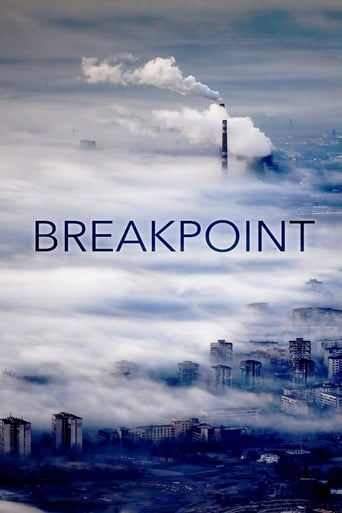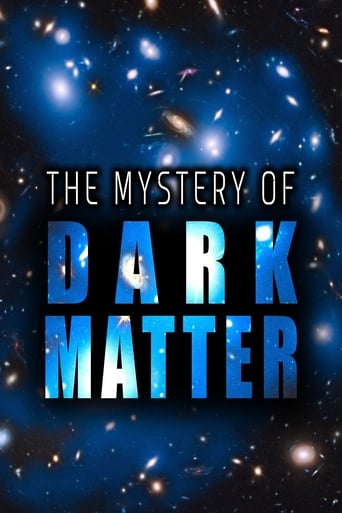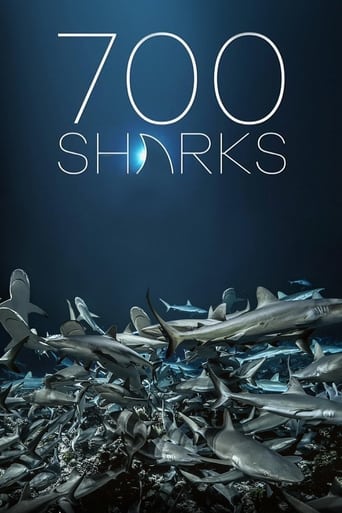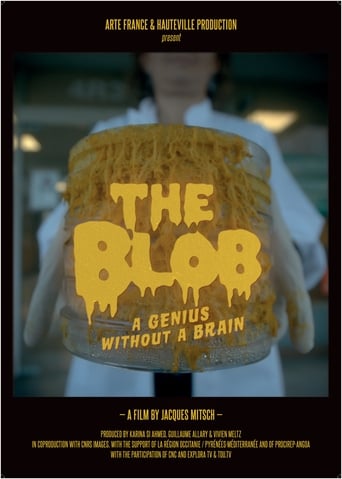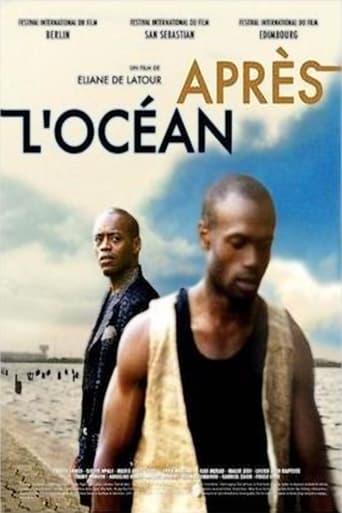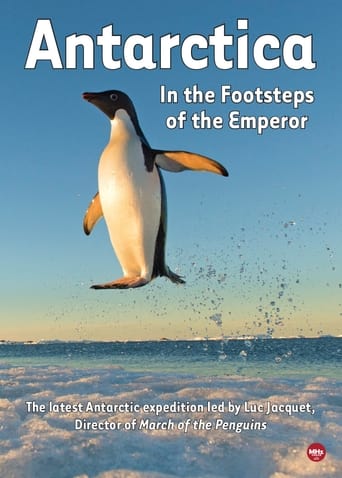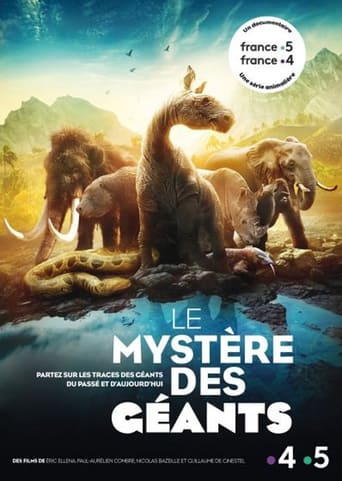CNRS Images
Breakpoint: A Counter History of Progress 2019
An account of the last two centuries of the Anthropocene, the Age of Man. How human beings have progressed so much in such a short time through war and the selfish interests of a few, belligerent politicians and captains of industry, damaging the welfare of the majority of mankind, impoverishing the weakest, greedily devouring the limited resources of the Earth.
The Mystery of Dark Matter 2012
Dark matter fills the cosmos, and yet its identity is still unknown. For the first time, a film portrays the wild scientific quest find out what it is. This breath-taking thriller leads us to the dawn of a scientific and metaphysical revolution, akin to Copernic's or Galileo's. It could totally change the way we perceive our world.
700 Sharks 2018
Gombessa Expedition 4 Laurent Ballesta went to observe a gathering of thousands of groupers during the full moon of June 2014 (Le mystère mérou) in the southern pass of the Polynesian atoll of Fakarava, where he discovered a pack of over seven hundred grey sharks. How can this unprecedented density be explained? Could it be that social behaviors govern this wild horde? During three years of preparation, he and the other divers on his international scientific team tamed their fear by abandoning the defensive reflexes that provoke shark aggression, with the aim of slipping into the heart of the raging pack to study and film it from the inside. Sharks fitted with microchips, receiving antennas, hydrophones, an ark of 32 synchronized cameras...: a whole technological arsenal is mobilized for the project. As the groupers approach for their annual spawning, what battle plan will the sharks deploy?
Marie Curie: Beyond the Myth 2011
From her birth in Warsaw to her entry into the Pantheon, Marie Curie's work and career is a myth. Honored throughout the world and embodying a model of excellence, its history and life remain unknown in France. An intimate portrait of an exceptional scientist, Nobel Prize in Chemistry, 100 years ago.
The Coelacanth, a dive into our origins 2013
Gombessa Expedition 1 To dive for the Coelacanth is to go back in time. In 1938, when it was known only as a fossil, a Coelacanth was discovered in South Africa in a fisherman's net. This species bears witness to an evolutionary bifurcation 380 million years ago, and bears the marks of a great event: the day the fish left the ocean for the open air. Does it hold the secret to the transition to walking on land? In 2010, a marine biologist and outstanding diver, Laurent Ballesta, took the first photographs of the Coelacanth in its ecosystem. In April 2013, divers and researchers set down their equipment at the Sodwana base camp in South Africa, in the club founded by Peter Timm (who died in 2014). Six weeks of extreme diving at depths of over 120 meters, in an attempt to film the Coelacanth with a double-headed camera, collect its DNA and tag a subject with a satellite-linked beacon...
Mont Saint-Michel: The Enigmatic Labyrinth 2017
Over the centuries, Mont Saint-Michel, an extraordinary island located in the delta of the Couesnon River, in Normandy, France, a place floating between the sea and the sky, has been a sanctuary, an abbey, a fortress and a prison. But how was this architectural wonder built?
The Blob: A Genius without a Brain 2019
This documentary outlines the unique properties and latest studies of "Physarum Polycephalum", also known as Blob.
Versailles Rediscovered: The Sun King's Vanished Palace 2019
Based on the latest technological and scientific advances, this documentary explores the palace's architectural past to resurrect Louis XIV's vanished Versailles. Versailles was an ongoing building site at the time of Louis XIV and continued to be transformed by its successive occupants later on. The Versailles we know today only vaguely resembles the Versailles of the Sun King. Most of its original features and apartments no longer exist. Thanks to the digitisation of thousands of plans, a team of scientists takes us back in time to explore this forgotten past in a new way, through a large-scale reconstruction project to bring back the Versailles of Louis XIV as he designed it, according to his requirements and dreams.
Beyond the Ocean 2006
Journey of an african migrant through Europe.
Chambord: The Castle, the King and the Architect 2015
Chambord, the most impressive castle in the Loire Valley, in France, a truly Renaissance treasure, has always been an enigma to generations of historians. Why did King Francis I (1494-1547), who commissioned it, embark on this epic project in the heart of the marshlands in 1519? What significance did he want the castle to have? What role did his friend, Italian genius Leonardo Da Vinci (1452-1519) play? Was he the architect or who was?
Petra, the Capital of the Desert 2014
At the dawn of the Christian era, Petra, capital of the rich kingdom of the Nabataeans, bordering the deserts of Arabia, Syria and the Negev, was absorbed by the Roman Empire and, after being sacked by the Bedouins, disappeared from the memory of mankind; but its secrets are gradually being revealed thanks to an enormous excavation work.
Antarctica, in the footsteps of the Emperor 2016
Gombessa Expedition 3 Protected by an international treaty Antarctica has been spared the effects of hunting and fishing. But signs in ice’s cyclical patterns and its biodiversity have become worrying. Connected to the planet’s global ecosystem via atmospheric circulation and ocean currents, this white haven is suffering the effects of human activities. To document and explain what is unfolding in Antarctica, photographer, diver, and marine biologist Laurent Ballesta and photographer of extreme environments Vincent Munier will be blending their artistic perspectives of a rapidly changing continent. Laurent will tackle technical and human prowess below the ice to bear witness to its remarkable underwater life. His photographs will advance knowledge on Antarctica’s unique and little-known biodiversity. On land, his eye riveted to the lens of his camera, Vincent captures snapshots of life in an Emperor Penguin colony.
Kurdistan: The Untold Story of Mesopotamia 2018
In Iraqi Kurdistan, a region that has not yet been explored, a formidable archaeological adventure is taking place where scientific knowledge is the answer to oblivion.
Funeral at Bongo: The Death of Old Anai 1979
In 1972, the Dogon of the Bandiagara cliff in Mali celebrated the funeral of Anaï Dolo, head of the Bongo Masks Society, who died at the age of 122. On this occasion, the large Bongo mask, is erected and for twenty days, family members, elders, men from neighbouring villages purify the village.
Brains in Danger 2017
For the past 20 years, the world has seen an alarming decrease in IQ and a rise of autism and behavioral disorders. This international scientific investigation reveals how chemicals in objects surrounding us affect our brain, and especially those of fetuses.
Dogon Drums, Elements of a Study in Rhythm 1966
The young goat herders from the cliff of Bandiagara practice on the stone drums of their ancestors. An ethnomusicological film experiment describing the subtle plays of the right and left hand of Dogon drummers.
The Mysteries of the Giants 2018
When a huge meteorite crashed into the earth 66 million years ago and caused the disappearance of the dinosaurs, some of the planet’s tiniest species survived the cataclysm, and—against all odds—eventually became some of the greatest giants to ever roam the earth. From the poles of the planet to the belly of the equator, this documentary sheds new light on four giant animals that are still a great mystery to science today: the Titanoboa snake, the Megalodon shark, the giant rhinoceros and the giant sloth.

